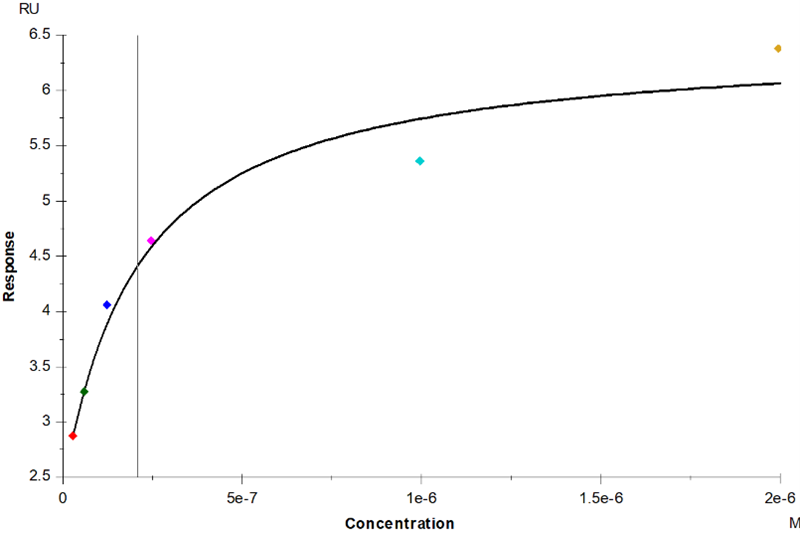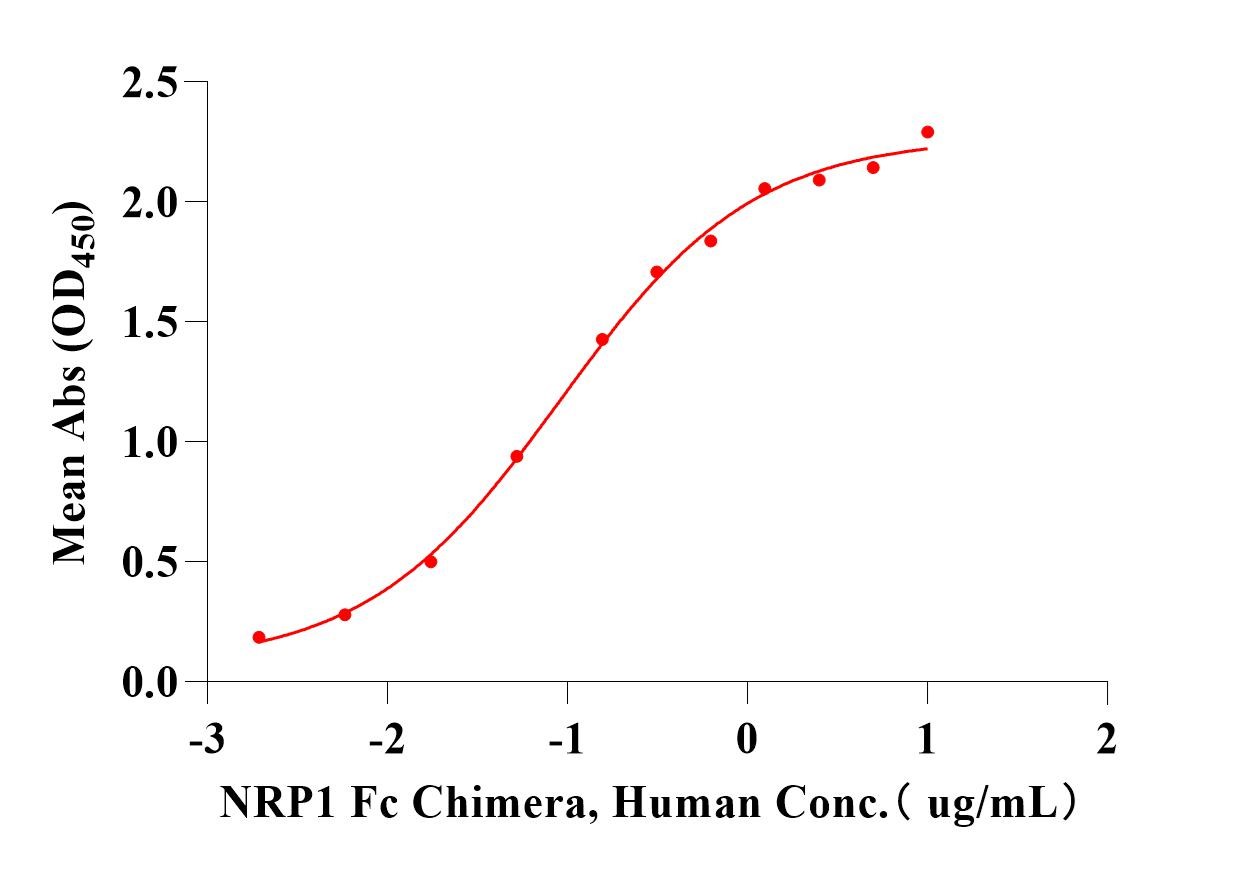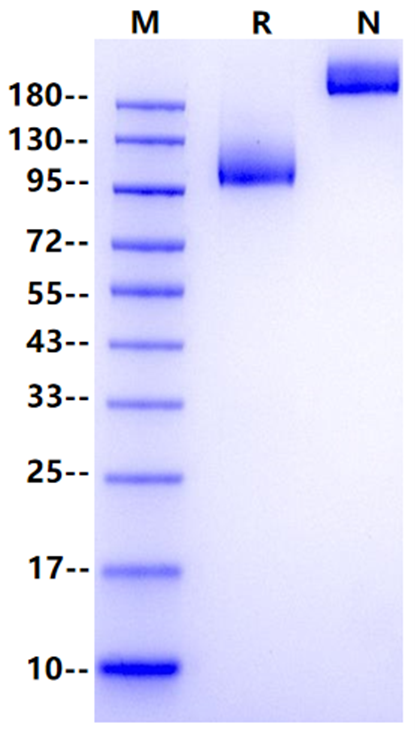Phe22-Lys644, with C-terminal Human IgG Fc
FRNDKCGDTIKIESPGYLTSPGYPHSYHPSEKCEWLIQAPDPYQRIMINFNPHFDLEDRDCKYDYVEVFDGENENGHFRGKFCGKIAPPPVVSSGPFLFIKFVSDYETHGAGFSIRYEIFKRGPECSQNYTTPSGVIKSPGFPEKYPNSLECTYIVFVPKMSEIILEFESFDLEPDSNPPGGMFCRYDRLEIWDGFPDVGPHIGRYCGQKTPGRIRSSSGILSMVFYTDSAIAKEGFSANYSVLQSSVSEDFKCMEALGMESGEIHSDQITASSQYSTNWSAERSRLNYPENGWTPGEDSYREWIQVDLGLLRFVTAVGTQGAISKETKKKYYVKTYKIDVSSNGEDWITIKEGNKPVLFQGNTNPTDVVVAVFPKPLITRFVRIKPATWETGISMRFEVYGCKITDYPCSGMLGMVSGLISDSQITSSNQGDRNWMPENIRLVTSRSGWALPPAPHSYINEWLQIDLGEEKIVRGIIIQGGKHRENKVFMRKFKIGYSNNGSDWKMIMDDSKRKAKSFEGNNNYDTPELRTFPALSTRFIRIYPERATHGGLGLRMELLGCEVEAPTAGPTTPNGNLVDECDDDQANCHSGTGDDFQLTGGTTVLATEKPTVIDSTIQSGIKIEGRMDPKSSDKTHTCPPCPAPELLGGPSVFLFPPKPKDTLMISRTPEVTCVVVDVSHEDPEVKFNWYVDGVEVHNAKTKPREEQYNSTYRVVSVLTVLHQDWLNGKEYKCKVSNKALPAPIEKTISKAKGQPREPQVYTLPPSRDELTKNQVSLTCLVKGFYPSDIAVEWESNGQPENNYKTTPPVLDSDGSFFLYSKLTVDKSRWQQGNVFSCSVMHEALHNHYTQKSLSLSPGK
>95% by SDS-PAGE
NRP1 was first discovered as an adhesion molecule in the frog nervous system. It is a non-tyrosine kinase transmembrane glycoprotein located on the cell surface and plays a role of a co-receptor for secreted Semaphorin-3A (Sema3A). Previous studies have shown that NRP1 gene expression is widespread over a variety of cells and tissues such as endothelial cells, and the heart, liver, lung, kidney, pancreas, and skeletal muscle. NRP1 plays a vital role in the nervous, digestive, and immune systems, etc. through interaction with various ligands, promoting angiogenesis, neural development, cytoskeleton remodeling, inflammation, initial immune response, as well as occurrence and development of tumors. Actually, the role of NRP1 in the occurrence and development of human malignant tumors has arisen as an interesting research topic recently. Increasing evidence suggests that higher expression or mutations of NRP1 are closely related to initiation, progression, and prognosis of varieties of types of malignant tumors in humans, including hepatocellular carcinoma, gastric cancer, breast cancer, prostatic cancer, and pancreatic cancer.


